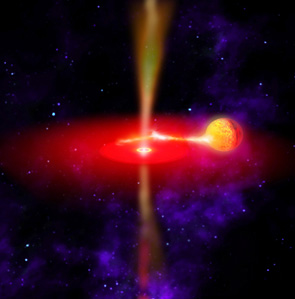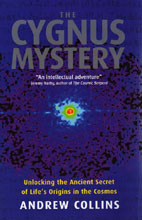![]()
![]()
COSMIC RAYS AND THE CYGNUS MYSTERY
Did Cosmic Radiation change evolution and kick-start religion?

A Report by Andrew Collins
Ever since the discovery in the 1920s that radiation can cause gene mutations, scientists have speculated on the role that high energy cosmic rays might have played in evolution. Indeed, as early as 1930 it became the theme of a science-fiction story in which cosmic rays were harnessed by a mad scientist in order to rapidly transform himself into a super being millions of years ahead of his time,
|
Carl Sagan (1934-1996) |
while similar ideas must have been behind the entrance of the alien black monolith among a community of ape-men in Arthur C Clarke's classic '2001: A Space Odyssey'. Moreover, one of the greatest scientific minds of the twentieth century, American astronomer Carl Sagan wrote in 1973 that human evolution was the result of incoming cosmic rays from some distant neutron star, demonstrating how everything in the universe affects everything else. It was a bold notion, but one destined not to find favour among geneticists, simply because there was no hard evidence that cosmic rays - first confirmed during a series of balloon ascents in 1912 by Austrian physicist Victor F Hess (1883-1964) - have any real impact on evolution, whatever their origin (since there is no consensus on this fact). |
Indeed, H J Muller (1890-1967), the American geneticist whose work with the fruit fly Drosophila led to the realization that radiation (he used X-rays and later radium) was a mutagen, addressed the topic in a paper published in 1930 and again in 1952. He concluded that the cosmic ray flux penetrating the upper atmosphere and reaching ground level was inadequate to explain spontaneous mutations in life forms, whatever their type. Muller was not wrong, but had he been privy to modern scientific data that clearly demonstrates that at certain times in the Earth's history it has been bombarded with high levels of cosmic rays then he might have thought again.
| Records
from the Ice Information of this order comes from the fact that when so-called 'primary' cosmic rays hit the upper atmosphere almost all of them break up when they collide with nuclei of oxygen and nitrogen, the process producing a plethora of charged secondary particles. Many disintegrate in milliseconds, but others with much longer half lives plummet to the ground and are preserved in everything from lake sediments to stalagmites and, more crucially, the ice that forms to great depths in the Arctic and Antarctic regions. One such isotope called Beryllium 10 (10Be) is clearly traceable in ice cores. Since individual layers of ice form each year the levels of Beryllium 10 can be counted to provide accurate indications of cosmic ray activity in the upper atmosphere. |
Drilling ice cores in Greenland. |
In recent years, an analysis of ice cores extracted from polar stations in Greenland and Antarctica have clearly demonstrated that over the past 100,000 years, there have been three periods when the cosmic ray flux has increased dramatically.
|
Meinel
Institute's spectral analysis of Be-10 |
The first was around 60,000 years ago, the second occurred approximately 40,000-35,000 years, and the third and last peak began around 17,000 years ago. Each one lasted for a period of approximately 2,000 years. Similar results have been determined from a stalagmite removed from a submerged blue hole in the Bahamas. An examination of its Beryllium-10 content indicates that between 45,000 and 11,000 years ago the Earth was bombarded by twice the amount of cosmic radiation than it is today. |
Where's the Cosmic
Source?
The first question one must ask is where this influx of cosmic radiation
might have come from. Was it really a neutron star, as Carl Sagan suggested,
or could it have been another astronomical source such as a black hole,
which produces jets of particles that reach out far across galaxies?
| Alternatively, was there some other, more prosaic solution to this enigma? The more of less regular gaps between the spikes of Beryllium 10 activity noted in the ice cores might well indicate some kind of cyclic force in action, most obviously that of the sun. Cosmic rays are known to be partially deflected by the solar magnetic field that stretches out far into the heart of the solar system, and it is believed that the rate of Beryllium 10 production in the upper atmosphere is dependent on the strength of the solar field, which is itself connected with sunspot activity. |
Solar magnetic field, reaching into the solar system (Pic credit: NASA). |
Was it an Exploding
Star?
In addition to this, the sun's long term climate cycles of 100,000,
41,000 and 23,000 years, first noted by Serbian geophysicist Milutin
Milankovic (1879-1958), must also affect the production of Beryllium-10
for similar reasons, i.e. the influence of the solar field upon the
Earth's upper atmosphere. This said, there might easily have been other
factors behind the sudden increase in cosmic rays hitting the earth,
the most catastrophic being a supernova, the death of a star as it expels
the last of its nuclear fuel and collapses to form a high-mass compact
object, either a white dwarf, black hole or neutron star.
|
Supernova
remnant SN1987A, which |
Supernovas produce enormous bursts of gamma rays and cosmic rays which are sent out across dozens if not hundreds of light years of space. If such an event occurred close enough to our own solar system then the Earth would be showered by deadly radiation, which might damage the ozone layer, causing not only many more rays to reach ground level, but also the onset of high levels of UV radiation from the sun. More conservatively, catastrophists suggest that a close supernova would send a barrage of cosmic particles in our direction, which would dramatically increase cloud formation, preventing the sun from penetrating through the atmosphere, and thus bringing about a sudden ice age. |
Whatever the consequences of a close supernova, life on Earth would suffer mass extinctions. As terrifying a scenario as this might seem, it was the favoured theory for the sudden disappearance of the dinosaurs some 65 million years ago until the discovery in 1980 of the Chicxulub impact crater in Mexico's Yucatan peninsular.
| This helped confirm the alternative theory that a super-sized asteroid or comet had been responsible for their extinction. Indeed, this was the opinion of Carl Sagan and his co-author Dr I S Shklovskii, the famous Soviet astrophysicist and radio astronomer, in a scholarly book entitled Intelligence in the Universe, published in 1966. In fact, one wonders whether Sagan's unique view that cosmic rays accelerate human evolution actually stemmed from his obvious fascination with the extinction of the dinosaurs, even though we now know they were not killed off this way.Yet the powerful idea of a close supernova wreaking devastation on earth during some past geological age lingers,with some |
Carl Sagan
once believed the dinosaurs |
catastrophists believing that it could have brought about mass extinctions during other geological epochs, for instance at the close of the Jurassic age some 145 million years ago, as well as at the culmination of the Pleistocene age, which coincided with the end of the last Ice Age, some 11,000 years ago. And such scientific speculation is where it starts getting interesting, for when the high levels of beryllium 10 were first noted in the ice cores at the beginning of the 1990s, scientists from the Cosmic Ray Council of the Soviet Academy of Sciences, working alongside a team from the University of Arizona, speculated that they resulted from a supernova explosion just 150 lights years away; that's just 900 million, million miles from here.
|
Cygnus
Loop or Veil, the remnant of a supernova |
To back up their dramatic claims the joint Soviet-American team cited the presence at around 150 light years away in the northern constellation of Cygnus of an immense formation of glowing clouds of gaseous debris - the remnants of an immense supernova explosion - known to astronomers as the Cygnus Veil, or Veil nebula. Was this the remnants of the supernova explosion that had showered the Earth with cosmic rays for up to 2,000 years some 40,000-35,000 years ago? Did it bring about dramatic climatic changes and bursts of radiation that evolved humanity into what we are today?
|
The Emergence of
Man
For whatever reason, the worldwide press coverage that resulted
from this dramatic announcement of a close supernova some 35,000 years
ago came to nothing. Yet, thankfully, there was one person who did take
notice, and this was British anthropological writer Denis Montgomery.
Having lived in Africa for many years, where anatomically modern humans
emerged for the first time some 200,000 years ago, he became intrigued
as to why sudden jumps of evolution occur. Was it purely spontaneous,
through chemical changes in the body, or were there other exterior factors
at play, such as environmental and climatic changes, nutritional variety
or even simple competitiveness?
| Even though there is ample evidence that our earliest ancestors migrated from Africa, most probably in search of new resources of food as early as 80,000-70,000 years ago, there exist only tiny glimpses of what we were capable of achieving at this time. For instance, around 80,000 years ago the peoples of the republic of Congo were making barbed bone hooks for fishing, while a community that inhabited a large cave called Blombos on the southern coast of South Africa would seem to have fashioned the earliest known examples of expressive art. These take the form of incised pieces of red ochre rock, showing cross-hatching designs, as well as perforated snail shell beads, once strung on a cord and worn either as a necklace or bracelet. All of these invaluable objects are thought to be around 75,000 years old. |
Denis Montgomery (Pic credit: Denis Montgomery) |
Age of the Artist
In spite of the discovery of these clearly sophisticated personal
items, whether practical or aesthetic, it was not until the start of
the Upper Palaeolithic age around 40,000 years ago that something quite
dramatic began to occur. At a time coincident to when homo sapiens first
entered a Europe dominated until this time by the Neanderthal folk,
there is clear evidence for the adoption of a complex life style, the
earliest known to human kind.
|
Horses
in the cave of Chauvet, |
It involved religious expression and practices, including detailed funerary rites, as well as magnificent new forms of art, such as the carving of animals, birds and humans in bone and stone and, crucially, the first appearance of cave art, such as the extraordinary painted galleries discovered as recently as 1994 at the Chauvet cave in southern France. Dating to some 35,000 years before the present time, they contain images and sculptures of whole menageries of wild animals, including horses, rhinos, lions, mammoths and bison, alongside abstract representations of the human form extenuated, or brought to life, by the rock face itself. |
Rapidly, hundreds
of cave systems across Western Europe became full of sophisticated and
highly accomplished art forms, a tradition which continued through until
around 17,000 years ago, when suddenly there was a dramatic increase
in sacred painting deep underground. This trend ended finally around
11,000 years ago when the Upper Palaeolithic age climaxed coincident
to the cessation of the last Ice Age.
What Denis Montgomery wondered was whether that, in addition to other
environmental, climatic and human factors, the increase in cosmic rays
around 35,000 years ago, perhaps from the assumed supernova explosion
which caused the creation of the Cygnus Veil, acted as a mutagen to
effect sudden changes in the brain's neurological processes. This in
turn might have brought about the enlightened age of the cave artist
in Western Europe. It could also explain why the Neanderthal peoples
suddenly became extinct around this time, perhaps as a result of too
much competition from their competitive new neighbours, the homo sapiens.
Montgomery's unique ideas were privately published, and, inevitably, largely ignored by the scholarly community (they can downloaded free from www.sondela.co.uk). Adding to his problems was the realization by astronomers during the mid 1990s that the Cygnus Veil, the nebula at the centre of what Montgomery came to refer to as 'the Cygnus event', was found to be not 150 light years away from the Earth, as had previously been thought, but in fact around 1,800 light years away. This meant that from here the supernova explosion would have been little more than a bright light source in the northern sky lasting for a period of several days, before gradually dying away. Doubly damning were recalculations concerning the age of the supernova event, which now appears to have occurred as recently as 5,000-8000 years ago (even though some astronomical sources still reckon it took place much earlier, perhaps 10,000-15,000 years ago). Thus there was no way that the Cygnus Veil can have been responsible for the high levels of cosmic rays reaching Earth's atmosphere when the first cave artists created underworld Sistern Chapels like Chauvet around 35,000 years ago.
Enter the Meinel
Group
It would not be until 2005 that this same cosmological conundrum
would be tackled again. At the conference of TAG (the Theoretical Archaeological
Group) in Sheffield, England, held in December that year, Dr Aden Meinel
- a retired veteran of NASA's Jet Propulsion Laboratory, who in the
1980s was responsible for the launch of space telescopes such as Hubble
- told a packed audience of bemused archaeologists and students that
he and his colleagues at the Meinel Institute in Pasadena, California,
had determined that the high levels of Beryllium 10 in the Greenland
and Antarctica ice cores were responsible for sudden changes in evolution
in both animal and human life around 40,000-35,000 years ago.
| He
also reported that he had been able to use the ice core evidence
to determine the approximate coordinates for the source of the cosmic
rays, and that these pinpointed a planetary nebula (a mass of glowing
gas and cloud) known as the Cat's Eye in the northern constellation
of Draco, the celestial dragon. This the Meinel group saw as the
remnants of what was once a galactic binary system consisting of
a super giant and an active black hole spewing out jets of plasma,
or ionized gas at velocities close to the speed of light. These,
he proposed, had crossed thousands of light years of space to reach
the earth around 40,000 to 35,000 years ago, causing the changes
in evolution witnessed at this time. |
Aden Meinel of the Meinel Institute (Pic credit: Aden Meinel). |
|
The Well Scene at Lascaux showing Cygnus as a bird on a sky-pole (Pic credit: Andrew Collins). |
It was a dramatic claim, and one that needed scientific evaluation, which is where I entered this gripping story. My own research into the emergence of primitive societies, with their own unique cosmologies and religion, ha revealed an inordinate interest in one particular constellation - Cygnus, the celestial swan. Indeed, it features as the oldest known artistic representation of a constellation anywhere in the world, for it is seen on the walls of the famous Lascaux cave in southern France, which is known to have first been occupied around 17,000 years ago. |
| Cygnus
also appears as a bird in Church Hole cave in Derbyshire's Creswell
Crags alongside cave art dated to 12,800 years ago, while at Göbekli
Tepe in southeast Turkey, an 11,500-year-old stone temple - the
oldest anywhere in the world - is orientated towards this same constellation.It
is the same story with ancient stone and earthen structures worldwide,
from the bird effigy mounds of North America to the Olmec centres
of Mexico, the Incan sacred city of Cuzco, the Egyptian Pyramids
of Giza, the Hindu temples of India to Avebury, the largest stone
circle in Europe - all seem to reflect an age-old interest in Cygnus,
which features also at the heart of religious symbolism worldwide,
including that of Judaism, Christianity, Hinduism, Islam and more
primitive forms of shamanism. |
Göbekli Tepe, 11,500-year-old megalithic stone temple in South-east Turkey (Pic credit: Andrew Collins). |
Putting aside more obvious astronomical reasons as to why our ancestors might have been interested in this particular constellation, shown universally as a celestial bird, I searched for answers as to why it might have been depicted deep underground by the cave artists of the Upper Palaeolithic age. In the knowledge that the work of South African anthropologist and rock art specialist David Lewis-Williams had determined that much prehistoric cave art was inspired by shamans in mind-altered states, I wondered whether the stars of Cygnus had come to be seen as the source of a primeval being, thought to have been responsible for cosmic life and death. Moreover, did the peoples of the Upper Palaeolithic come to associate this primeval cause with religious experiences deep underground, where their most sacred cave art was executed? If so, then why did they come to associate a specific star constellation with the deepest part of caves?
|
The Soudan underground detector in Minnesota (Pic credit: Soudan) |
I searched for answers, and was intrigued to find that in the early 1980s particle physicists using two newly-operational proton decay detectors -Soudan, located half a mile down an old mine in Minnesota, and NUSEX found off a road tunnel deep beneath France's Mont Blanc - detected the presence of highly unusual cosmic rays. They bore the distinctive 'fingerprint' of a strange binary system containing a black hole or neutron star known as Cygnus X-3. The existence of these high energy cosmic particles caused immediate controversy, since they matched the characteristics of no known particle. |
Cygnus X-3 was identified
as the first confirmed source of high energy cosmic rays able to penetrate
deep underground, and then in 2000 NASA announced that it was the galaxy's
first confirmed 'blazar', meaning that it was producing plasma jets
that periodically sprayed the earth with volleys of cosmic rays, something
it has been doing for anything up to 700,000 years.
The concerted reverence for Cygnus as the bird of creation and the source of cosmic life and death, led me to conclude that those responsible for the cave art at Lascaux, most probably shamans skilled in achieving altered states, had somehow become aware of incoming cosmic rays when deep underground. Scientists have long been aware that when cosmic rays disintegrate they produce what is known as Cherenkov radiation, which appears as an objective burst of light as it passes through the water of the eye.
| This phenomenon was first noted in 1968 when astronauts abroad Apollo 11 on its journey to the moon found that in the darkness they could see tiny flashes of light, either with their eyes open or closed. A NASA-funded investigation was quickly launched, which found that these light flashes were caused by cosmic rays passing through the Apollo spacecraft. Did the Palaeolithic shamans deep underground come to identify similar light bursts caused by cosmic rays from Cygnus X-3 as part of some religious experience, centred on the Cygnus constellation. Moreover, did the high levels of cosmic rays that affected the world in Palaeolithic times come from the direction of Cygnus, explaining why it can be found at the heart of religious symbolism worldwide. |
Cygnus X-3 taken by the Chandra X-ray observatory (Pic credit NASA/Chandra X-ray Observatory ACIS/HETG). |
Yet now Cygnus X-3
had a rival candidate in the Cat's Eye nebula, the chosen candidate
for cosmic rays proposed by Aden Meinel and the Meinel Institute. Unfortunately,
astrophysicists are unanimous in their opinion that the Cat's Eye is
a wimpy object unable to produce cosmic rays that might reach the Earth.
|
Artist's impression of a black hole/neutron star binary system like Cygnus X-3 (Pic credit: NASA). |
What is more, the Meinels, by their own admission, looked first in Cygnus for a possible point source of cosmic rays, and had found none - Cygnus X-3 being overlooked. When in 1973 Carl Sagan wrote that cosmic rays might have been responsible for changes in human evolution he boldly asserted that their source was most probably a neutron star, which he saw as one of the most fascinating stellar bodies in the whole of the universe. Today there can be little doubt that Cygnus X-3, as a neutron star/black hole as well as the galaxy's first confirmed blazar, is the best candidate by far for at least a proportion of the cosmic radiation responsible for the acceleration of human evolution at a time when we were just beginning to emerge as modern human beings. |
Yet more disturbing is the fact that Cygnus X-3 is still out there, its cosmic gun barrel trained on the Earth, ever ready to release a volley of cosmic particles in our direction. It has burst into action three times already this year, yet astronomers are waiting for what they see as the 'next big bang', showers of cosmic particles on a level never seen before, and when this happens, who knows, we might well be ready for the next stage in evolution.
| THE CYGNUS MYSTERY by Andrew Collins is published in the UK by Duncan Baird Publishing on 19 October 2006. To order copies online click here, or by cheque through the post, click here. For more information on Denis Montgomery's forward-thinking anthropological ideas visit his website at www.sondela.co.uk |
![]()
![]()

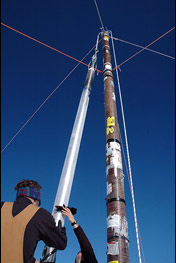
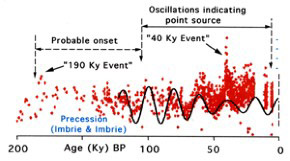
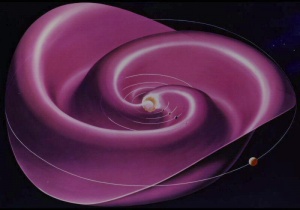
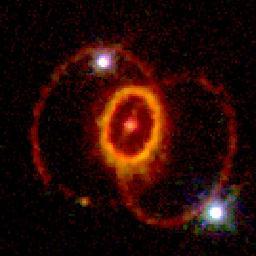
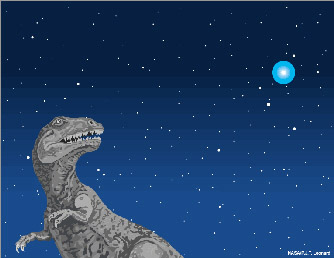
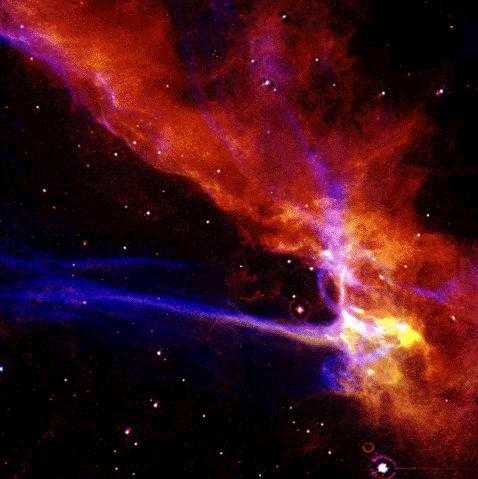

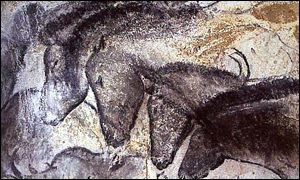


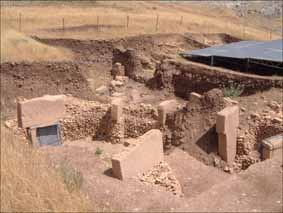
.jpg)
.jpg)
